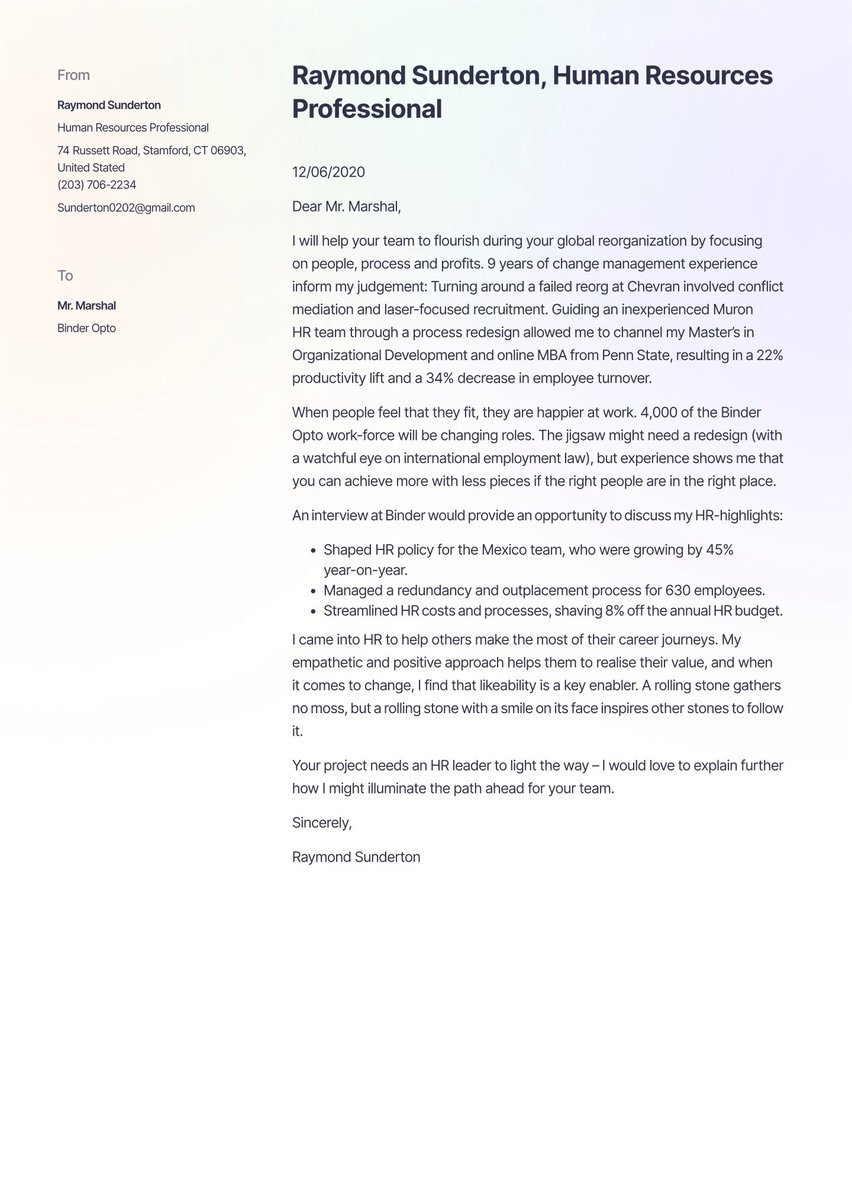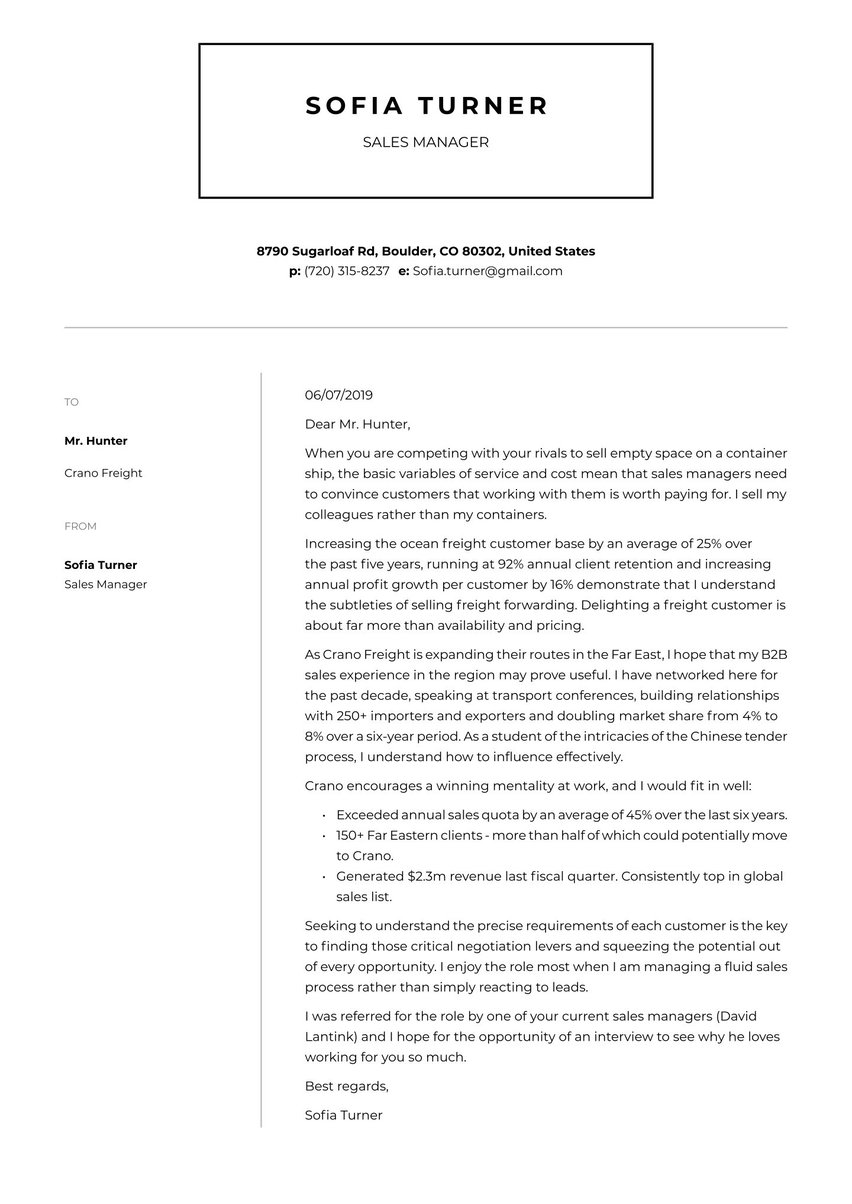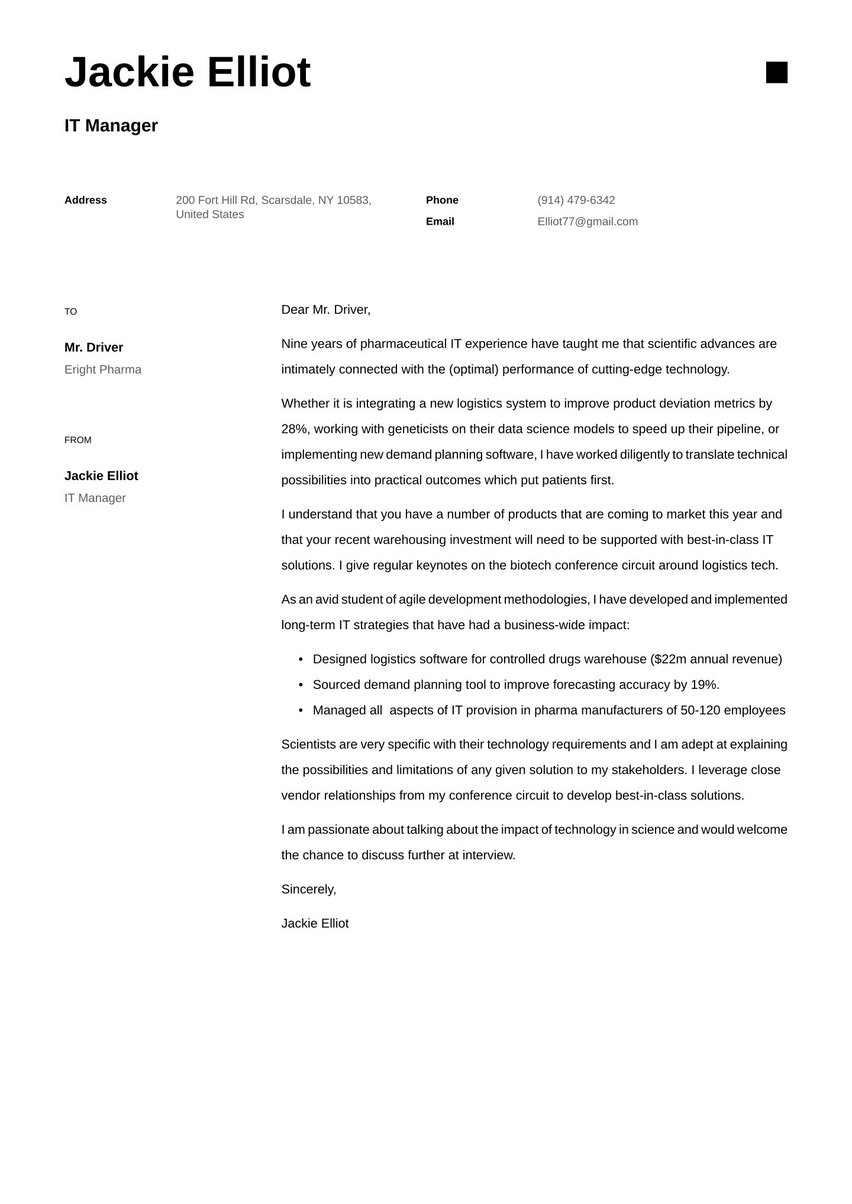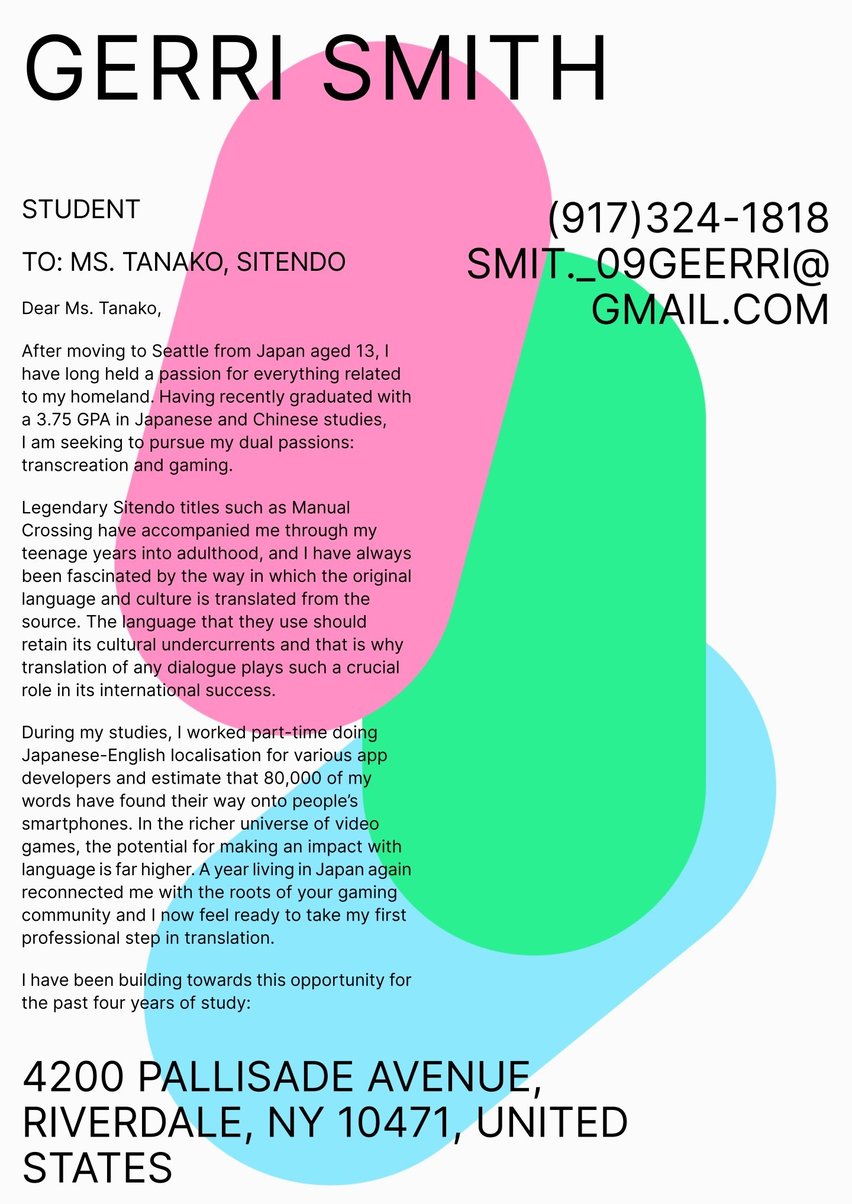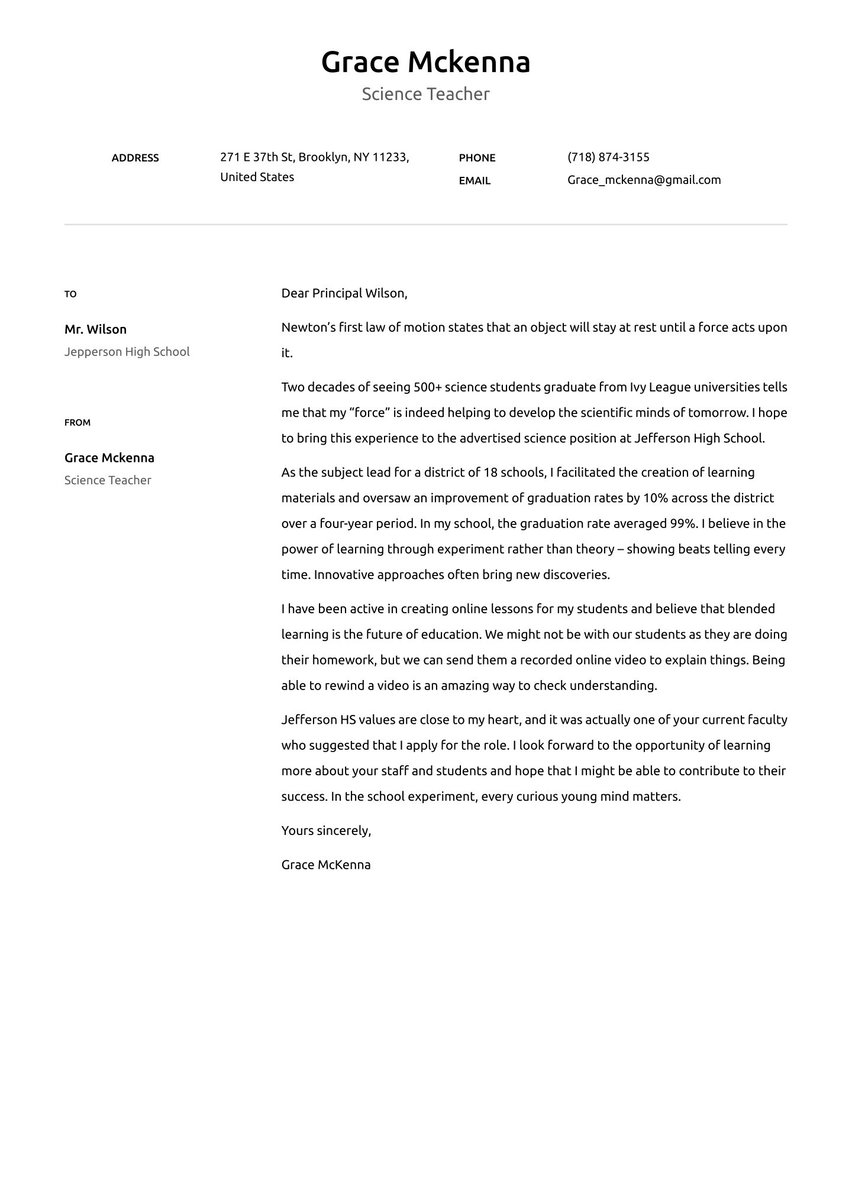If you’ve ever flown on a plane, and there were lights and movies and a button that summoned a flight attendant — plus the wheels descended on time before landing — then you should thank an electrical engineer. The way we make our morning coffee (unless you make yours on a campfire) relies to some extent on electrical engineering. As much as we appreciate these highly qualified professionals, it’s their value to the employer that counts above all else in a job search — starting with a dynamic electrical engineer cover letter.
You’ve plugged into the right place for help writing this essential job application document. Resume.io is a leading global supplier of career support resources, including more than 180 occupation-specific writing guides and cover letter examples.
The guide you’re reading now is backed by an electrical engineer cover letter example. Here’s what we’ll talk about:
- Why an electrical engineer needs a cover letter
- How to structure and write your electrical engineer cover letter
- How to optimize the impact of each cover letter section: header, greeting, introduction, body and closing
- Designing the letter so it looks great
- Tips for writing a persuasive letter
- Common cover letter mistakes to avoid
Electrical engineers design, develop and build electrical devices, including electric motors, communications systems and virtually everything else that relies at some level on electricity. Even our usually cordless devices, our prized phones and laptops, would be dead in the water without power. And in our increasingly sophisticated world, almost all power depends in part on electricity.
Some electrical engineers are also electronics engineers, who develop the technology behind the electronic devices like the gizmo on your phone that tells you where to drive when you’re lost.
According to the U.S. Bureau of Labor Statistics (BLS), electrical engineers earned a median wage of $100,420 in 2021, and electronics engineers earned $104,820. The BLS projects job growth of 3% for electrical engineers from 2021 through 2031. This is slower than the average for all occupations, and makes competition for the best jobs more intense.
If you’d like to get one of those jobs, it shouldn’t be too hard if you have the skills, but you’re going to need a winning job application package, which must include a cover letter in addition to your resume.
For additional inspiration and guidance, we invite you to browse through the other engineer cover letter samples and writing guides in Resume.io's collection.
Why an electrical engineer needs a cover letter
Surveys of hiring managers have found that one of the top reasons that resumes are rejected is the failure to include a cover letter. It’s an expected part of a job application, so leaving it out is an automatic strike against you.
A resume and cover letter do contain many of the same things, including some mention of the experience, skills and qualifications that make someone a good job candidate. But while a resume is a relatively impersonal document that isn’t addressed to anyone, a cover letter is a way of establishing a personal relationship with a hiring manager.
A cover letter enables you to showcase your personality, passion and drive in ways that a resume alone can’t. It enables you to tell stories about your past successes on the job. It allows you to discuss the needs of the specific employer you’re writing to. And it’s simply good etiquette — you are asking for a job, after all, and a cover letter is a way of doing so professionally and politely.
If you had your own electrical engineering firm and you wanted to send a proposal to a client, you would surely include an introductory letter and not just a bid. This kind of personalized outreach is always more likely to get results.
In rare cases, a few employers may state that they prefer to receive a resume only. But unless you’re specifically asked not to, always include a cover letter with a resume.
Best format for an electrical engineer cover letter
A cover letter should never be longer than one page, with a maximum of 400 words. It should contain these elements in this order:
This section of our guide will take you through each of these cover letter sections, discussing what each should contain how to write it effectively. To illustrate, we’ll refer to the following electrical engineer cover letter example.
October 28, 2023
Dear Mr. Wilkers,
The Electrical Engineer position at Watson Bryant would be the perfect continuation of a career that has seen three of my projects win industry awards and another, “Energy Innovation of the Year.”
With a graduate degree in electrical engineering from Penn State, and seven years’ experience with Hitchson & Awcastle and Brantwell — two leaders in the petrochemical engineering industry — my grasp of operational and technical complexities is extensive.
Specialized knowledge of advanced engineering applications, energy storage systems, and prototype testing, I’ve contributed to projects that increased manufacturability, reduced cost and enhanced safety. My Hillmore system redesign led to a 12% decrease in fault detection, a 22% equipment downtime reduction, and repair / replacement cost savings of $270k over one year. The best designs anticipate and prevent future operational problems.
My team and I have managed 50+ mid-sized petrochemical projects, with particular emphasis on improved reliability and maintenance of drilling technology, and increased efficiency of remote generators and energy storage systems.
I spent the past two years training electrical engineers on the latest legislation, codes, industry tools and applications, and look forward to continuing this in my next role. Ensuring safety is a critical aspect of our remit, and this comes after a deep awareness of the rules and regulations. My last nine projects boast a 100% safety record to this day.
I am a regular attendee at industry conferences, including PetroExpo, where we last met in 2022. In fact, our conversation there planted the seed for this job application. I would welcome the chance to meet again during an interview and discuss how my approach might make a difference at Watson Bryant.
Sincerely,
Devin Callahan
Cover letter header
Once known as a letterhead, the cover letter header is the space at the top of your letter that contains your name, profession, address, phone number and email. This needs to be there so that employers know how to contact you, but it also serves as a design element that should make your letter more pleasing to the eye.
It can include a subtle touch of color, and some striking typography and design elements — as long as it looks professional, never garish or over-designed.
To give you some ideas, look at the headers in our cover letter examples.
Align document styles
Your resume and cover letter should look like they were designed to go together, so you want to use the same fonts, formatting styles and other design principles in both. The header on your resume and cover should be similar if not identical, so that it’s obvious at a glance that they are a matching set.
Matching resume and cover letter styles gives you a “visual brand.” This demonstrates your attention to detail and shows that you understand the importance of coherent design.
On the other hand, if your resume and cover letter are a visual mess full of mismatched styles, that suggests a total lack of organization on your part — never an attractive quality in a job candidate.
Goal of the cover letter header: Distinguish yourself from other job applicants by attracting visual attention and displaying your regard for detail and professionalism.
Greeting/salutation
The traditional “Dear Mr. [last name]” or “Dear Ms. [last name]” is the generally recommended form of address in your cover letter greeting.
If you and the recipient happen to know each other, a first-name greeting may be acceptable. But beware of being too casual or familiar when writing to someone who has the power to offer you a job.
Do try to find out the name of the hiring manager responsible for the position you’re seeking, and use that person’s name. It shows your attention to detail and conveys respect that you’ve gone to the trouble of finding out the name of the appropriate person to address.
If you can’t find this information online, consider making a phone call to the company to inquire. But if for some reason the company doesn’t want to name names, then you need to find a simple way to address your letter to an entire company or a department within that company, such as “Dear Acme Hiring Manager” or "Dear Engineering Team."
Goal of the cover letter greeting: Start off on a professional note while making a direct personal connection with the hiring manager.
Cover letter introduction
Start your electrical engineer cover letter with an engaging introductory paragraph that identifies the job you’re seeking and makes an opening case for why you’d be a great candidate.
Use language that’s bold and confident, yet without ever crossing a line into arrogance or a presumption that your hire is a foregone conclusion. Find a tone of voice that captures both your professionalism and your personality.
Normally your professional experience should be the first thing you mention as you begin to discuss your qualifications. For example: "In my 10 years in electrical engineering, I’ve gained broad-based experience in designing electrical and electronic devices of all kinds, and I’d like to put my expertise and resourcefulness at your disposal as a senior electrical engineer."
Goal of the cover letter introduction: Captivate recruiters with a preview of your qualifications that motivates them to read more.
See the greeting and introduction from our electrical engineer cover letter example below.
Dear Mr. Wilkers,
The Electrical Engineer position at Watson Bryant would be the perfect continuation of a career that has seen three of my projects win industry awards and another, “Energy Innovation of the Year.”
Cover letter body (middle part)
The two or three paragraphs in the middle of your letter should expanding on the experience you touched on in the introduction. But don’t just mention where you worked and for how long. Be specific about what you achieved in those roles, using facts and figures to demonstrate beneficial results.
The two or three paragraphs in the middle of your letter should generally start by expanding on your experience. Don’t just mention where you worked or for how long, but be specific about what you achieved at those jobs, using facts and figures wherever possible.
Tell a short story — discuss a difficult challenge you faced in the past, what action you took and how you resolved it.
Usually, you’ll want to highlight your education and any relevant certifications you may have. If you’re new to this field (for example, if you’re a recent college graduate), it may be appropriate to lead with your education and any internships you've completed.
Always try to say something about the employer you’re writing to, perhaps using its name. Note any challenges the company faces to show awareness of your potential value if hired. At the very least, this demonstrates that you’re writing a letter targeted to a specific employer and not just mass-mailing a generic cover letter to all.
Goal of the cover letter body: Reinforce the connection between your previous a and potential future benefits to the hiring organization.
The body section from our electrical engineer cover letter example gives you an idea of what yours might include.
With a graduate degree in electrical engineering from Penn State, and seven years’ experience with Hitchson & Awcastle and Brantwell — two leaders in the petrochemical engineering industry — my grasp of operational and technical complexities is extensive.
Specialized knowledge of advanced engineering applications, energy storage systems, and prototype testing, I’ve contributed to projects that increased manufacturability, reduced cost and enhanced safety. My Hillmore system redesign led to a 12% decrease in fault detection, a 22% equipment downtime reduction, and repair / replacement cost savings of $270k over one year. The best designs anticipate and prevent future operational problems.
My team and I have managed 50+ mid-sized petrochemical projects, with particular emphasis on improved reliability and maintenance of drilling technology, and increased efficiency of remote generators and energy storage systems.
I spent the past two years training electrical engineers on the latest legislation, codes, industry tools and applications, and look forward to continuing this in my next role. Ensuring safety is a critical aspect of our remit, and this comes after a deep awareness of the rules and regulations. My last nine projects boast a 100% safety record to this day.
Cover letter conclusion and sign-off
Wrap up your cover letter conclusion with a thank you and some kind of call to action. The last thing you want is for your reader to set your letter aside and do nothing about it. So let that person know that you’re looking forward to a response of some kind, whether it’s an email, a phone call or (ideally) an invitation to come in for an interview.
Avoid suggesting that you “expect” a response or feel entitled to one, but plant the thought that you would be delighted to hear back, letting your reader know that you’re genuinely interested in this job.
Here’s an example: "I hope you’ll agree that my job experience makes me well suited for the electrical engineering job you’re offering, and I thank you for considering my candidacy. I’m always reachable at the contact info listed above, and I look forward to hearing from you soon to discuss the matter further."
Close with “Sincerely,” “Best regards,” “All my best” or a similar phrase, and type your full name below that.
Goal of the cover letter closing: End on an upbeat, self-assured note with a call to action that ideally results in an interview.
The closing section of our electrical engineer cover letter example illustrates a persuasive conclusion and call to action.
I am a regular attendee at industry conferences, including PetroExpo, where we last met in 2022. In fact, our conversation there planted the seed for this job application. I would welcome the chance to meet again during an interview and discuss how my approach might make a difference at Watson Bryant.
Sincerely,
Devin Callahan
How to design a good-looking cover letter
Looks matter, so you need to pay attention to the appearance of your cover letter design. We recommend using a professional cover letter template that’s already done the design for you. Here are some of the design principles to consider when building or choosing your cover letter format and visuals:
Font: The font you use should be one that’s easy to read and doesn’t look strange or unusual in any way. Don’t use fonts that look like cursive, that are too bold or too lightweight, or that for any other reason look exotic. For specific dos and don’ts, review our guide to best fonts cover letters.
Font size: Make the font size no larger than 12 points and no smaller than 10. Resist the temptation to cram your long letter onto one page by reducing the font size, and instead focus on cutting unnecessary text.
Text alignment: Align text left, rather than justified from margin to margin, to leave a little white space where each line ends.
Paragraphs: Do not indent paragraphs, leave a space between them, and to avoid big blocks of black text on your page, don’t make them too long.
Margins: Use one-inch margins on the top, bottom, left and right of your letter.
Save as PDF: Save your cover letter as a PDF before attaching it to an email or uploading it in the employer’s job-application system. A PDF will retain the formatting of your original document, whereas other formats can make text jump around or even turn to garble when viewed on a different device or opened in a different application.
Your safest bet is to use a professionally designed cover letter template that’s already taken care of all these design issues. We have an excellent cover letter builder that helps you with pre-generated phrases (no more writer’s block!)
The psychology of writing a persuasive letter
As you’re writing this letter, try to get inside the reader’s mind and put yourself in the hiring manager's chair. Your goal is to convince recruiters that you are so qualified for the job that they will feel compelled to take action on your letter and initiate the steps that will lead to your hiring.
That means your electrical engineer cover letter needs to be a model of persuasive writing. In fact, depending on how important this job is to you, you might have to write a life-changing letter.
Psychologists say that humans are wired to respond to stimuli in both rational and emotional ways. Rational responses are slower and more deliberative, while emotional responses are more automatic, “from the heart.” Both responses can be involved in hiring decisions, and both can be subconsciously triggered by different kinds of language.
For example, the rational mind will respond more readily to a job candidate’s job experience, education, skills and other qualifications. But the emotional “heart” responds to more intangible factors, like the candidate’s passion, personality, drive and likability. Think about this as you write your cover letter. Don’t be too robotic or cold, but speak like one human being to another.
No employers want to hire somebody they don’t like, so be absolutely positive that nothing in your letter makes you sound superior or egotistical.
Remember that a letter seeking a job should be focused on the employer’s needs, not yours. You’re not trying to convince the recruiter that you need a job — you’re trying to make a case that the company needs you.
So put yourself in the shoes of the person you’re writing to, and don’t just write the letter you want to write; write the letter that person would want to receive.
Common cover letter mistakes you don’t want to make
Unfortunately, people who write cover letters often make mistakes. Here are some of the more common ones that you should be aware of and avoid.
- Typos and simple writing errors: Misspellings, bad grammar and poor punctuation can all be deal-breakers, so reread your letter carefully. If in doubt, hire an editor to review it and correct any errors you might have made.
- Cover letter clichés: There are certain phrases that recruiters have read a thousand times before, like those from people who claim to be “team players” who “think outside the box.” Eradicate these phrases from your vocabulary and use original language that you haven’t read anywhere else.
- Non-customized letters: One-size-fits-all cover letters that you plan to send to 50 employers are a non-starter. Every cover letter should be targeted to a specific employer to address its needs and to talk about how you can help solve its problems.
- Design errors: Garish headers, strange fonts, tiny text and other design errors may disqualify your letter at a glance. Unless you’re really skilled at typographic design, use a template to sidestep these and other fatal flaws.
Key takeaways for an electrical engineer cover letter
- A cover letter is an essential part of a job application package that can make the difference between success and failure, so it shouldn’t be an afterthought that you dash off in five minutes.
- Follow the rules of proper cover letter structure to make sure your letter contains all the essential elements.
- Follow the principles of good cover letter design so that your letter looks as good as it reads.
- Put yourself in the shoes of your reader and write a letter focused on the needs of the employer.
- Avoid common errors like typos, clichés, mass-produced letters and poor design.








